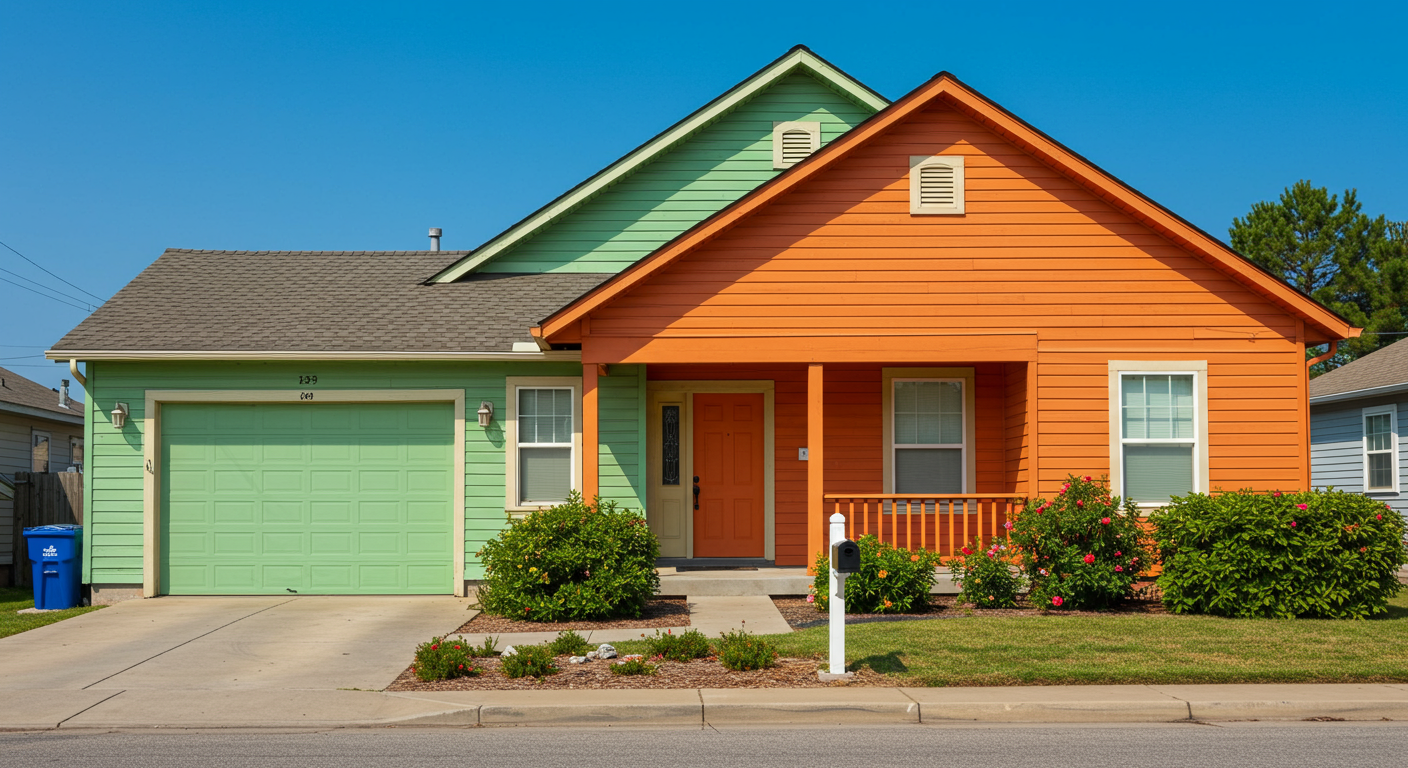Painting the exterior of your house is a rewarding project that can transform the look of your home while protecting it from the elements. Whether you’re a DIY enthusiast or considering hiring professionals, following the right steps is crucial for achieving a durable and beautiful finish. This guide will walk you through the essential steps to painting the exterior of your house in Hickory, NC, ensuring a smooth and successful project.
Preparation for Exterior Painting
Importance of Assessing Surroundings
Before diving into the painting process, take time to assess your surroundings. Inspect the exterior of your house for any damage, such as cracks, peeling paint, or rotting wood. Pay attention to areas exposed to harsh weather conditions, as they may require extra care. Additionally, check for nearby plants, furniture, or fixtures that need protection during the painting process.
Tools and Materials Needed
Having the right tools and materials is essential for a seamless painting experience. Gather items such as paintbrushes, rollers, drop cloths, ladders, painter’s tape, and high-quality exterior paint. Investing in the right tools not only saves time but also ensures a professional finish.
Safety Precautions and Weather Considerations
Safety should always be a priority. Use sturdy ladders and wear protective gear, including gloves and goggles. Check the weather forecast before starting; ideal conditions include dry weather with moderate temperatures. Avoid painting on windy or rainy days to prevent uneven drying and debris sticking to the paint.
Cleaning and Repairing Surfaces
Effective Cleaning Techniques
Cleaning the exterior surfaces is a critical step to ensure the paint adheres properly. Use a pressure washer to remove dirt, grime, and old paint. For stubborn stains, consider using a trisodium phosphate (TSP) solution. Allow the surfaces to dry completely before moving to the next step.

Scraping and Sanding Loose Paint
After cleaning, inspect the surfaces for peeling or flaking paint. Use a scraper to remove loose paint and sand the edges to create a smooth transition between old and new paint. This step is essential for achieving a flawless finish.
Repairing Damaged Wood and Caulking Gaps
Address any damaged wood or cracks before painting. Replace rotting wood and fill gaps with exterior-grade caulk to prevent moisture from seeping in. Proper repairs ensure the longevity of your paint job and protect your home from future damage.
Priming and Painting Techniques
Choosing the Right Primer and Paint
Selecting the right primer and paint is crucial for a durable finish. Use a primer designed for exterior surfaces to create a strong base for the paint. Choose high-quality, weather-resistant paint that complements your home’s style and withstands Hickory’s climate.
Step-by-Step Painting Process
Start by painting the siding, working from top to bottom to prevent drips. Use a roller for large areas and a brush for edges and corners. Next, paint the trim and foundation, taking care to use precise strokes for a clean look. Apply at least two coats for optimal coverage and durability.
Tips for Achieving a Smooth Finish
To achieve a professional finish, avoid overloading your brush or roller with paint. Work in small sections and maintain a consistent stroke pattern. Allow each coat to dry completely before applying the next, and inspect your work for any missed spots or uneven areas.
Post-Painting Considerations
Maintenance Tips for Longevity
Regular maintenance can extend the life of your paint job. Inspect your home’s exterior annually for signs of wear, such as peeling or fading paint. Clean the surfaces periodically to remove dirt and debris, and touch up any damaged areas promptly.
Proper Paint Storage and Disposal
Store leftover paint in a cool, dry place, ensuring the lid is tightly sealed. Dispose of empty paint cans and unused paint responsibly by following local regulations. Proper storage and disposal protect the environment and keep your workspace organized.
When to Call Professional Painters in Hickory, NC
While painting your home’s exterior can be a rewarding DIY project, some situations may require professional expertise. If you’re dealing with extensive damage, complex architectural details, or limited time, consider hiring experienced painters in Hickory, NC. They can ensure a high-quality finish and save you time and effort.
For more insights on finding the right painting professionals, check out Discover the Best Painting Contractor Websites in Hickory, NC: Your Guide to Quality Services.
Painting the exterior of your house in Hickory, NC, is a significant undertaking that requires careful planning and execution. By following these steps, you can achieve a stunning and durable finish that enhances your home’s curb appeal and protects it from the elements. Whether you choose to tackle the project yourself or hire professionals, the key is to prioritize quality and attention to detail.


